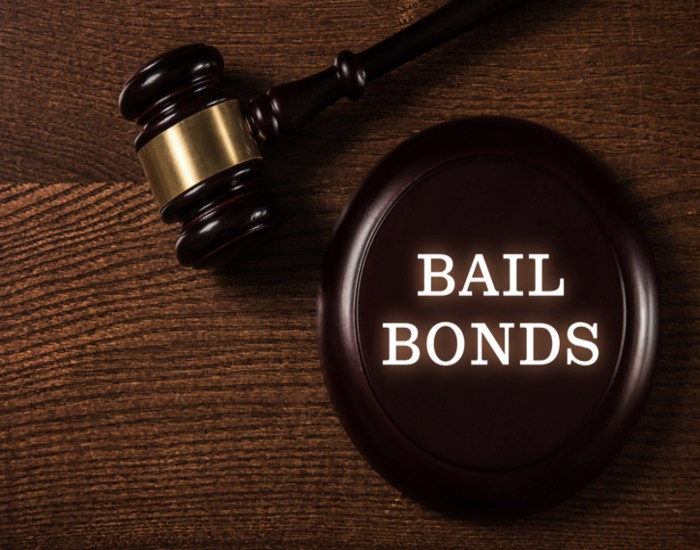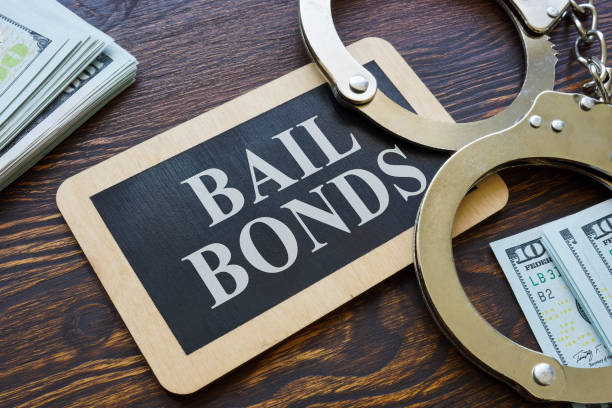Recognizing the Basics of Bail Bonds: What You Required to Know
Navigating the intricacies of bail bonds is an important aspect of the lawful system that can significantly affect the accused's trip via court procedures. A bail bond acts as an economic assurance for the court, promoting momentary launch from custodianship while waiting for test. However, the ins and outs of how bail bonds run, the numerous types readily available, and the important factors to consider in picking a reliable bail bondsmansman can be intimidating. Comprehending these aspects is crucial, as the repercussions of missteps may result in unpredicted issues that expand much beyond the court. What are the fundamental aspects that must understand to properly steer this process?
What Is Bail?
Bail is a monetary arrangement that permits an individual implicated of a criminal activity to be launched from safekeeping while awaiting trial. The main purpose of bail is to guarantee that the defendant stands for future court proceedings (Bail Bondsman). Typically established by a judge, the bail quantity varies depending upon the nature of the criminal offense, the defendant's criminal history, flight threat, and various other significant aspects
When bail is granted, the charged or an agent should pay a defined sum, which might be in money or through a bail bond. Sometimes, bail can be denied altogether, especially for serious offenses or if the suspicious presents a substantial threat to public safety. The principle of bail is rooted in the presumption of virtue, reinforcing the idea that individuals must not be penalized prior to a sentence.

Recognizing Bail Bonds
A bail bond is a monetary instrument that helps with the launch of an accused individual from guardianship, functioning as a warranty for their look at future court dates. This setup allows offenders to keep their liberty while waiting for trial, minimizing the concerns connected with imprisonment. The bail bond process commonly involves a third-party business, understood as a bondsman, who gives the required funds to the court in support of the charged.
Bail bonds can be found in various types, including guaranty bonds, building bonds, and cash money bonds, each with distinctive needs and effects. Surety bonds, one of the most usual type, need a premium repayment, usually a percentage of the complete bail amount, which is non-refundable. On the other hand, a property bond entails using realty as security, while cash money bonds demand the full bail quantity to be paid ahead of time.
Comprehending the subtleties of bail bonds is vital for offenders and their family members. It is necessary to grasp the potential financial ramifications, consisting of responsibilities and costs to link the bail bondsmansman, in addition to the lawful duties tied to making certain court appearances. Understanding of these elements help in making notified decisions during a difficult time.
How Bail Bonds Work
The process of protecting a bail bond typically entails numerous vital steps that guarantee the accused can reclaim their liberty while awaiting trial. Initially, the private or their depictive calls a bondsman, that analyzes the case and the linked risks. The bail bondsman will need information regarding the accused, consisting of the fees, the bail amount established by the court, and any pertinent personal information.
When the bondsman agrees to give the bond, the accused or their rep should pay a non-refundable cost, normally a percentage of the total bail quantity. This cost makes up the bondsman for handling the economic risk of making certain the implicated appears in court. In many cases, security may also be called for, such as property or useful properties, which works as protection for the bond.
After the fee and any type of security are prepared, the bail bondsman sends the needed paperwork to the court. Upon approval, the bail is uploaded, and the accused is launched from safekeeping. It Website is important for the accused to follow all court days and conditions, as failing to do so can cause the loss of the bond and possible legal consequences.
Kinds of Bail Bonds
Various kinds of bail bonds are available to match various situations and requirements. The most usual kind is the surety bond, where a bondsman warranties repayment of the full bail total up to the court in exchange for a non-refundable fee, commonly around 10% of the bail. This plan enables defendants to safeguard their release without paying the entire bail upfront.
One more kind is the money bond, which requires the accused or a co-signer to pay the complete bail amount in cash money straight to the court - Los Angeles Bail Bondsman. This option is commonly favored for reduced bail amounts, as it makes sure the cash Learn More Here is returned upon the defendant's appearance at all court proceedings
Building bonds involve using real estate as collateral. In this instance, the court places a lien on the residential or commercial property, which can be forfeited if the offender stops working to appear.
Lastly, federal bail bonds are specifically developed for federal situations, typically entailing greater amounts and extra intricacies. Recognizing these different bail bond types is important for accuseds and their households in making notified choices throughout a tough time.
Choosing a Bondsman
When selecting a bondsman, it is important to think about several vital elements that can impact the general experience and outcome. Review the bail bondsman's track record by looking into on the internet reviews and getting referrals from trusted sources. A trusted bail bondsmansman will certainly have a background of professionalism and reliability and successful instances.

The majority of bail bondsmen charge a non-refundable fee, generally around 10% of the bail amount. Openness in rates is a trademark of a credible bail bondsman.
Final Thought
Bail offers as a financial guarantee of court appearance, while different types of bail bonds cater to various scenarios. Comprehending the operational systems of bail bonds and picking a trustworthy bail bondsman can considerably affect the total experience.
The ins and outs of exactly how bail bonds run, the numerous types readily available, and the vital considerations in selecting a reputable bail bondsman can be daunting. The bail bond process normally involves a third-party firm, known as a bail bondsman, who gives the needed funds to the court on behalf of the charged.
The most usual kind is the guaranty bond, where a bond bondsman warranties settlement of the full bail quantity to the court in exchange for a non-refundable cost, usually around 10% of the bail. Bail offers as a financial assurance of court appearance, while different types of bail bonds cater to different circumstances. Recognizing the operational mechanisms of bail bonds and choosing a credible bail bondsman can considerably affect the total experience.